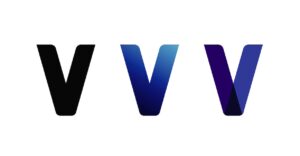In the last 18 months the medical device industry’s shift to digital business has been investigated and reported on by industry press, the analyst community, and advertising agencies.
With rep visits limited and live events and conferences being canceled, going virtual, or experiencing a fraction of the in-person attendance they once had, we have been working with our clients to find alternate means of reaching out to, and getting “in front of,” healthcare professionals. On average, it takes 8 touches to convert a customer, so we have worked with our clients to leverage a variety of marketing channels from email to direct mail, to digital media in an effort to build an effective multi-channel brand experience.
It is with this backdrop that our team thought we’d share one way that we’ve helped our clients find new customers for their products to help them not only stay afloat, but to grow, their business – and that’s through digital.
There are five digital platforms (Linkedin, Doximity, Figure 1, PulsePoint, and Sermo) that we’ve been speaking with our clients about more in the last 18 months than in the previous five years combined and we wanted to share some information – and some insights on each.
Linkedin:
Boasting nearly 750M members, with 8.6 million of them categorized through employer and job title as a “healthcare practitioner,” none of the other healthcare media platforms listed below can rival the scale of Linkedin.
Using their self-service advertising platform, we can segment audiences by job title, seniority, employer, geography, and a multitude of other filters. Linkedin has been an integral part of our strategic approach to connecting our medtech clients with HCPs who should know about, and need, their products.
The platform offers integrations with 1st party data, multiple ad types including; video, text, and banner ads and their own flavor of email called “InMail” that give users the ability to gather followers, create events, publish long-form content, and create/manage groups. Again, no other platform in our short list of five can match Linkedin’s scale and breadth.
That said, the challenge with Linkedin is that HCPs rely on it a lot less for their professional needs than the more HCP-focused portals that cater to their Continuing Medical Education credits and day-to-day patient cases. But from an awareness generation perspective, Linkedin is an effective and lower cost way to create “buzz” with the right audiences.
Doximity:
Doximity’s folks refer to their platform as the “Linkedin for doctors.” Using medical professional’s National Provider Identification number, or NPI for short, Doximity users can customize their profile and start connecting with colleagues, former med school classmates, and other physicians as they engage with, and build, their network.
As of this writing, Doximity has ~1.8M verified users with upwards of 46M connections between them. The platform records ~60% active user base on a monthly basis. For their users, Doximity offers CME, job opportunities, and career advice.
For advertisers, Doximity’s content team will help to curate content to their standards for targeted placement in their member’s newsfeeds. The platform offers targeting capabilities that rival some of the best any mass ad network can provide, allowing advertisers to segment the audience by NPI, geography, employer, specialty, gender, age, board certifications, and behavior (e.g., they’ve downloaded a study or watched a video).
The platform has a costly minimum buy-in, but the performance has proven a worthwhile investment with engagement rates pushing above 20% for most campaigns.
We’ve found that for targeted reach, Doximity is an excellent choice, the challenge mostly lies with the ability to produce meaningful content. Success on this platform is aided by close collaboration with the on-staff medical team at Doximity who will guide the content development process, informing it with best practices gleaned from having worked with other advertisers on the platform.
Figure 1:
Though Figure 1 can remind the uninitiated of Doximity, the Figure 1 experience is quite different. If Doximity is the “Linkedin for HCPs,” then Figure 1 is the “virtual lightbox”. With Figure 1, HCPs present their cases – typically supplying images and films – and explain what they’re challenged by with other physicians who offer their opinions, ask questions, and/or share what they’ve done to remedy a similar patient issue.
Figure 1 is all about peer-to-peer knowledge sharing and case collaboration. Their platform is “Built exclusively around real-life clinical cases” to “connect HCPs from around the globe to improve patient care.” Also available in Spanish and Portuguese, Figure 1 delivers scientific content, on-demand learning, and an intuitive mobile-friendly user experience that rivals that of the best consumer e-commerce platforms.
Since Figure 1 is a learning-first platform they do not really do banner ads, email marketing, or the like. We only roll out a Figure 1 approach when our clients have a complex product whose results are best understood through a video or data-rich whitepaper. When used appropriately, a campaign with Figure 1 can deliver stellar results.
For example, in 2020 an advertiser shared an anonymized case, targeted to orthopedic surgeons who specialize in the spine, of a patient who was diagnosed with Ankylosing Spondylitis (AS).
A post-campaign survey found that 90% of the surgeons who read the case learned something new about AS, 90% agreed that learning about AS through case-based education was effective, and 76% reported having seen, or suspected, AS in their practice.
Working with Figure 1 we’ve found their ability to target the right audiences is on par with other platforms, insofar as specialty, NPI, employer, etc. And aside from their differentiating peer-to-peer case-based approach to HCP engagement, Figure 1 offers numerous communications opportunities such as email, podcast sponsorship, and surveys. For the best chance at success on the platform, however, education through case-based information sharing is the most effective way to go.
PulsePoint:
For anyone with digital media experience, PulsePoint is the platform that most resembles mass reach digital media brands like MediaMath, MiQ, or The Trade Desk. This programmatic platform boasts the most sophisticated HCP targeting and reach available to medical device advertisers.
With the ability to reach HCPs most anywhere they go on the internet, segmenting and targeting them by their search behavior, job title, employer, NPI #, what they diagnose most often, their practice location, events they are attending (geotargeted to the event location), how they prescribe, procedures they do, referrals they make, and their specialty, the power of the PulsePoint platform to reach an HCP audience borders on remarkable.
PulsePoint offers a managed service and has, by comparison to the other platforms, a lower buy-in. They also use many of the standard IAB banner sizes, making it so that working with them to reach an audience of HCPs, very easy.
For generating awareness, creating a segment of HCPs to retarget with sequential messaging, or to reach the staff that surrounds the HCP (influencers and support team members), PulsePoint plays an important role in the media mix for our clients.
Sermo:
This is probably the HCP platform with broadest suite of tools. Though it is similar to Doximity and Figure 1, Sermo offers several tools and topics to differentiate itself from the others. Sermo places itself at the nexus of social media and clinical education, borrowing common user experience design and functionality from social media (e.g., a newsfeed, shares, and likes) with the medical education and depth/breadth of content found behind the paywalls of medical portals like Medscape.
There are ~800k triple-verified physicians on Sermo, whose reported activity on the platform is impressive. Annually there are over 8,000 patient cases are solved, 6.5M comments, nearly 4M poll votes, and 1M drug ratings.
The real differentiators for Sermo are the surveys and what we call “conversation mining.” Working with Sermo our team is able to segment out and connect with an audience of HCPs, where segmenting can be done by specialty, employer, etc., inviting them to answer a survey. The ability to get real-time insight into an HCP audience’s perceptions about a brand, product, or case, represents an invaluable resource for advertisers as the findings can shape and hone a message or product positioning.
Sermo’s other big differentiator is like a mash-up of Google Trends and clicking a hashtag on Twitter. As physicians communicate with one another over cases, drug reviews, and other topics their comments, opinions, and questions become searchable data entries that Sermo’s researchers use to understand in the aggregate how the physician community perceives or feels about a brand, product, procedure, or their understanding of an emerging health topic.
The platform offers a lot of tools, but surveys and conversation analysis are easily the most intriguing for our clients and advertisers in general.
Summary:
If you’re a medical device marketer who is looking to get your product in front, or in the hands, of a healthcare professional and you need help thinking through and developing the strategy and tactics to achieve your goals, we invite you to connect with us. A short conversation might be all it takes to go from unclear about how best to proceed, to having a handful of ideas to choose from and the makings of a strategy to explore further.






